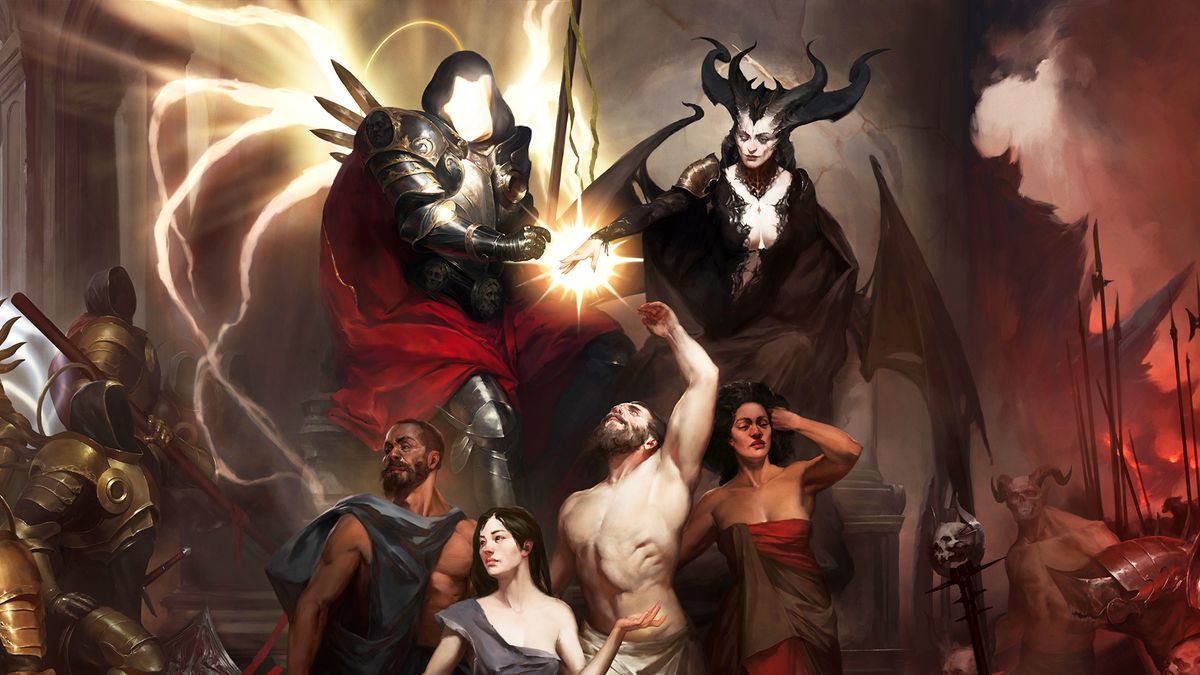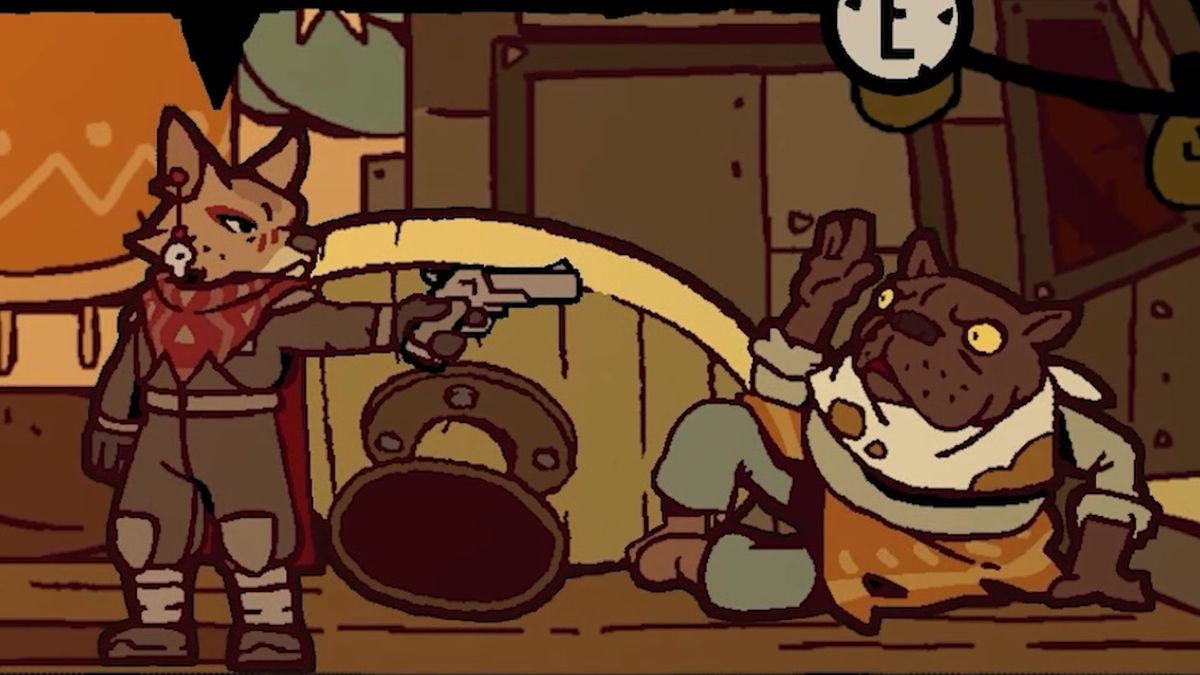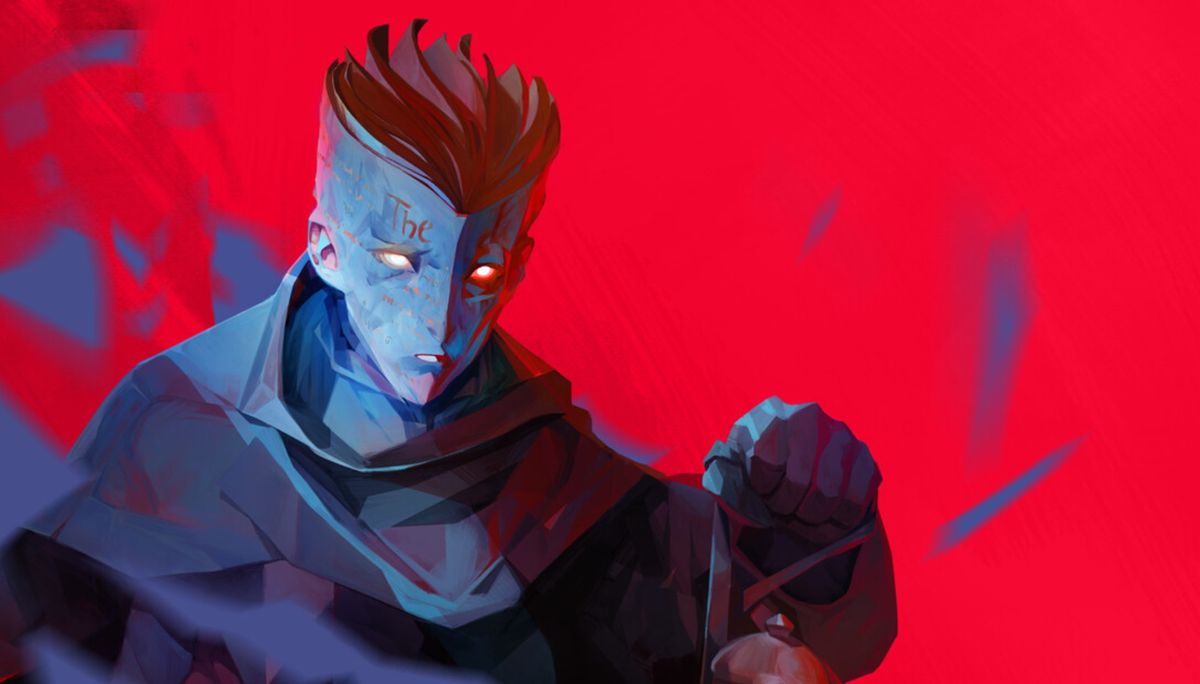Need to Know
What is it? A loot-filled action RPG in a Hellish world
Release date June 6, 2023
Expect to pay $70
Developer Blizzard
Publisher Activision Blizzard
Reviewed on RTX 3080 Ti, i9 12900K, 32GB RAM
Steam Deck Unsupported
Link Official site
Diablo 4 tries to ground us in its dark fantasy world, but that’s an impossible task in a game where you can pull a legendary two-handed axe out of a wolf. The storytelling is as subtle as a Marvel film and about five times as long, and no matter what Diablo 4’s cast of dour characters tell you, you are a superhero born with an empty inventory and the desire to fill it.
The title of Blizzard’s latest action RPG hides what’s really going on: Diablo 4 is a reboot. An unnecessary reboot, but one with a recognizable goal: to reconfigure the series’ strengths into a modern live service format that fits into the lives of players who probably have a handful of other games to play. Once you finish its campaign, its glorious depth reveals itself, but the overwhelming grind restrains the creativity in its intricate RPG systems.
Today’s prevailing live service structure, exemplified by Destiny 2, might seem to be a good fit for Diablo’s historically replayable co-op design, but it actually requires a huge structural shift. Diablo 4 begins like a story-driven adventure, but it’s not until you finish the campaign that its best parts start to unfold. Entire features, like the MMO-inspired Grim Favors quests or the almost roguelike Helltide events, are held back until you’ve suffered through a 10-hour storyline that tries to reset the over-the-top tone from Diablo 3, but goes overboard with the grimdarkness without fundamentally changing what a Diablo game is about (killing demons).
Misery business
Blizzard’s reaction to complaints that Diablo 3 wasn’t “dark” enough led to something so bleak it’s suffocating. While the campaign focuses on the growing threat of Lilith, the “Mother of Sanctuary”, the side quests offer different flavors of misery. Almost every character you meet does something awful, like betraying their own children, making a pact with demons, or murdering someone over a petty dispute. I’ve helped so many people find their dead family members or have had to kill them that I stopped listening to NPC requests. I was desperate to find joy or hope in all the people I’m supposedly fighting for and routinely found none.
The thematic “return to darkness”, or return to Diablo 2, that Diablo 4 promises only works when that horror meaningfully affects how you play. One early dungeon set in a monastery had me chasing after a lead on Lilith. I expected demons and dead monks but what I found were eerily empty hallways. In the distance I heard doors slam shut and screaming. Instead of yet another dungeon where you fight through nameless enemies to find your target at the end, I was stalking a murderer just out of my reach. The urgency with nothing but the sound of my footsteps echoing through the halls made for one of Diablo 4’s most chilling sequences.
That sort of upending of expectations is rare to find in Diablo 4’s quests, though. Much of it is held back for the endgame in features like Helltide events, which blanket a portion of the map in blood (literally) and supercharges all the demons there. You get one hour to kill as many as you can to collect their Aberrant Cinder drops and open as many rare item chests as you can. Dipping into these events solo puts you at risk of dying and losing half of your Cinders, but grouping up can drastically reduce the challenge. Helltides are the single best argument for Diablo 4’s semi-MMO features, adding thrilling urgency and risk to Diablo’s normally comfortable combat (even if the rewards aren’t that different from running a dungeon). The pushback forces you to see encounters not as a stairway to your next level, but as a puzzle to survive.
Every class a painting
The six-act campaign sends you around Estuar trying to stop Lilith from opening a portal to Hell. A few boss encounters, like a surprise fight with one of Diablo’s signature lesser evils in the middle of a sandstorm, stand out because of their significance to the story. Several of these fights are undercut by forgettable MMO-like mechanics that force you to dodge out of highlighted shapes on the ground until you win. It’s not until way after the campaign that you encounter bosses that pose enough of a threat to require a strong understanding of your class to defeat.
With its ridiculously slow pace and inability to establish a villain with comprehensible intentions, Diablo 4’s campaign doesn’t justify how long it takes to get through it. It offers few surprises and even when it seems like it might, it quickly veers back into the same story you’ve seen in these games before. Diablo 4’s campaign can’t solve the Eternal Conflict between angels and demons, and its ending is so inconsequential that I’ll gladly use the option to skip it on every new character I make.
After finally finishing Diablo 4’s campaign, I was let loose in its open world with all sorts of loot-hunting activities to do. Dungeons get harder and the game starts to require that you squeeze as much damage as you can out of your class, a targeted attack on my character-build-obsessed brain. Years of playing Blizzard games does that to you. It started with World of Warcraft and it continues every day with Overwatch 2. The developer has a talent for reaching into the guts of a genre and pulling out its heart.
The fundamental experience of playing Diablo 4, of clicking on demons and watching items pop out of them, activates my neurons in a way that’s almost embarrassing to admit. Up until now, I hadn’t realized that a core mechanic in action RPGs like this is to guarantee that the last enemy you kill in a group drops the loot to punctuate your 30 seconds of fun. It’s a slightly unsettling, yet clever piece of design that keeps you hungry in a game full of food. I really am a rat in a box, but that doesn’t stop me from enjoying it solo and in co-op, although your first co-op playthrough might feel too easy until the later World Tier difficulty options.
Diablo 4’s skill tree single-handedly keeps me from thinking too hard about the treadmill underneath my feet. Not since Elden Ring has my YouTube recommendation page been filled with commands to try this broken build or to use this OP item before it’s too late. All five classes—Barbarian, Druid, Rogue, Sorceress, and Necromancer—are substantially different from each other despite sharing the same hack-and-slash job. Their skill trees, a returning system from Diablo 2, modify and synergize your character’s abilities in such specific ways that nobody seems to agree on a single best build—which is what you want in a Diablo game.
On top of that, Legendary aspects earned from dungeons, or even pulled out of items, let you create your own Legendary gear to enhance your skills. Early on, I found a chestpiece that made my Bone Storm ultimate also provide a barrier. Suddenly I could walk straight into any group of enemies with a cyclone of bones and leave completely unscathed. After level 30, rare and Legendary items start to drop enough that you can rely on these aspects as permanent parts of your class.
Mere seconds after you’re dropped into the Fractured Peaks, you kill a few wolves, level up, and earn your first skill point—an exciting moment of possibility that the game won’t stop giving you until you start to near its level 100 cap. Skill points and their eventual successor, Paragon Points, are the dangling carrots that keep you clicking for hours and hours, long after you’ve seen everything your class can do. It’s still ridiculously satisfying to plan out your build and then strategically spend your hard-earned points.
I started as a Necromancer chauffeur of an army of skeletons, standing in place and shooting piercing bone spears while my boney buddies pulverized my foes. This method worked perfectly fine for hours, but, ever build-curious, I spent a sizeable amount of gold to rework my approach. I went from the commander of an undead army to a god imbued with the power of my sacrificed demons and loads of critical strike rating. I am an engine that runs on the corpses of my enemies. Tendrils sprout out of their remains, yanking the demons right into my ricocheting bone spears that now deal so much damage that I only need to cast a few before everything is dead.
Once you have an idea for how you want to play your class, chances are the skill tree has a path for you to get there. If you want to go all in on Bone Spear, you can find tons of skills that layer on top of its basic effect or set it up to deal ridiculous amounts of damage. Legendary aspects, which are earned by completing dungeons or finding Legendary items, modify this even further with unique effects. One of my rings causes my Bone Spear to do 100% extra damage on enemies who I’ve made Vulnerable. With the Plagued Corpse Tendrils skill, every enemy pulled in by it becomes Vulnerable for three seconds—just enough time for a Bone Spear or two.
The sheer number of creative options in the skill trees I’ve toyed with has me eager to see what the other classes have tucked away in theirs. Sorceress’, for example, can equip spells as a passive ability. At first glance, you’d assume this lets you double down on the school of magic you’ve chosen to wield, like having a 5% chance to cast a free Ice Armor for your ice build. Not quite. If you put a single point in Fire Bolt and use it in a passive Enchantment Slot, it makes any one of your abilities apply burning damage to their targets. With one skill point, your entire spellbook now benefits from Pyromancy skills, opening the door to a whole world of potential builds. What is more Sorceress than having such a mastery of magic that you can blend your spell effects?
Live for the grind
The deeper you get into Diablo 4, the harder it gets to change your playstyle. It’s one of the consequences of trashing Diablo 3’s brilliant rune system, which allows you to swap your skills for free at any time, in favor of a Diablo 2-style skill tree. And this is only made worse by how important your gear is to your build. Legendary items come with aspects that alter how your skills work, and many of these can define your build. If I were to drop the aspect that generated my Necromancer’s resource when I slow enemies, I wouldn’t be able to cast enough Bone Spears to survive late-game dungeons. The power of aspects and the cost of imprinting them onto rare items restricts how many times you can experiment with them unless you spend loads of time farming for gold and materials.
Right now, it would cost me 100,000 gold to reset my skills, and then I would have to spend more gold and rare materials from salvaging Legendary items to replace the aspects on my gear. It’s not impossible to respec, but the cost of doing so almost feels like a punishment to keep me from easily swapping to a better build without engaging in all the new ways to grind for resources. All I want is for Diablo 4 to loosen up on the live service restrictions so that the joys of clicking demons in creative ways can truly flourish.
If it weren’t expensive to respec, you could theoretically change your build for every Nightmare Dungeon or Helltide event, trivializing activities meant to keep you playing longer. By punishing experimentation with costly fees for crafting items, altering items, and respeccing, Diablo 4 becomes a mountain to slowly climb, day by day. The limits on character progression erode my motivation to keep chasing better and better loot. I’d much rather try other classes than grind out the same events for slightly better versions of the same loot.
Diablo 4’s seasons and battle pass promise to spice this typical action RPG loop up with unique enemies, events, and story quests to tackle. If it’s like Diablo 3, each season could revitalize all of the dungeons and events you’ve seen before and will see again and incentivize you to try classes and builds you might not have otherwise. All I hope is that it leans into the unpredictability and risk that can fade away after you reach a certain power level and level of comfort with your character. Because underneath the messy campaign and oppressively sad world is a fascinating Diablo game with a malleable skill system, build-defining loot, and thrilling open world events.
Diablo 4’s live service structure conflicts with the joy of building your character into a god—like you do by the end of the previous games—but it does leave it an opportunity for Blizzard to identify and embrace the game’s best parts through seasons or future patches. Right now, most of those things sit at the latter half of the game and are restrained by resource scarcity and tight enemy level scaling. It’s so close to channeling the progression-hungry energy that I need in a game about turning the legions of Hell into my precious loot crops. I need Diablo 4 to treat me like an adult who will rerun a dungeon 10 times for gear from the very start. I need it to encourage the kind of creativity its classes deserve. Because every second it doesn’t, all its potential is wasted.
The Verdict
85
Diablo 4
Diablo 4 is packed with powerful class builds and exciting loot to find, but clouds its most creative aspects with an overly bleak world and restrictive endgame systems.


